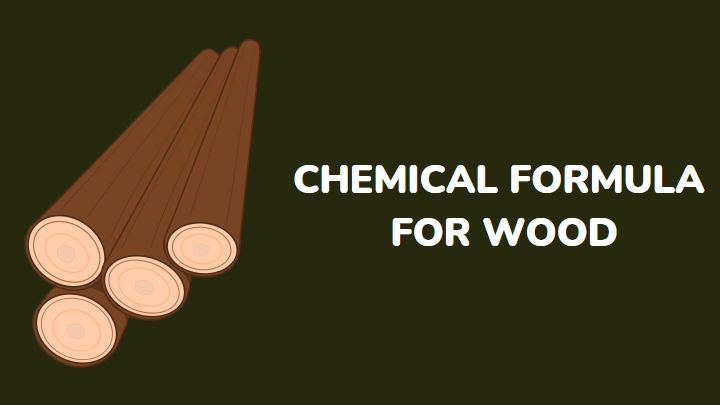Wood is a complex organic matter. It is a heterogeneous biopolymer that contains carbon, hydrogen, and oxygen. These elements are the building block of cellulose, hemicellulose, and lignin, its major components.
The complexity of the composition of wood makes it a little difficult to come up with a chemical formula that covers all its constituents. Different sources have cellulose as the chemical representation of wood because it is the major component.
This article discusses the chemical formula for wood in its different forms. Read on to learn more.
What is the chemical formula for wood?
The chemical formula for wood is represented by the chemical formula for cellulose, which is (C6H10O5)n, n represents the degree of polymerization.
Other components include hemicellulose, lignin, ash, water, and extractives. Some of them have very complex chemical formulas. This is why the chemical formula for cellulose is often used to represent the chemical formula for wood.
Each of these components plays important roles. Cellulose provides rigidity, flexibility, and solidity. Hemicellulose protects the cellulose fibers, and lignin helps to maintain plasticity and make it decay- and insect-resistant.
What is the chemical formula for burning wood?
The chemical representation for burning wood is as follows,
CH4 + 4O2 → CO2 + 2H2O + Heat
Wood combustion starts with the conversion of cellulose to methane and oxygen gas. Upon further combustion, it yields CO2, carbon dioxide, water, and heat.
What is the chemical formula for wood ash?
When wood burns completely, it becomes ash. Ash consists mainly of calcium compounds such as calcium carbonate (CaCO3) and calcium oxide (CaO).
A large majority of wood ash contains CaCO3 as its major constituent. CaCO3 comprises 25-45% of most wood ash.
The amount of ash and the compound present in it depends on the type of wood burned and the combustion temperature. Furthermore, ash also contains other elements such as potassium, magnesium, sodium, phosphorus, and manganese.
What is the chemical formula for wood sugar?
Beyond making furniture, paper, and fuel, wood is also a source of xylose (wood sugar). The chemical formula for this wood sugar is C5H10O5.
In addition, xylose is gotten from hemicellulose, one of the polymers that make up wood.
What is the chemical formula for wood spirit?
Wood spirit is the first in the alcohol series, methanol or methyl alcohol. Its chemical formula is CH3OH.
Wood spirit is a product of the destructive distillation of wood. It is a key ingredient in the production of different chemicals, as a solvent, a fuel, and a denaturant for ethanol.
Uses of wood
- For building furniture and houses
- Wood is used for manufacturing utensils
- Wood is used for fuel
- Wood is a good material for making musical instruments, paper, ships, and sporting equipment
- It also serves ornamental purposes such as making statues, sculptures, relief carvings, decorative bowls
- Wood is a source of renewable energy
- Wood helps to store carbon over long periods through trees, thereby mitigating climate change
FAQs
Is wood a biodegradable material?
Yes, it is. Wood, if left by itself, will degrade by natural processes such as the action of fungi and microbes.
Is wood a conductor or an insulator?
Wood is an insulator, not a conductor. It cannot conduct electricity because it does not have any free electrons. Instead, it contains lots of air pockets that act as the insulator.
Can you recycle wood?
Yes, you can. Recycling wood can help reduce deforestation. One of the common reuse of wood is for building and making pulp for paper.
Conclusion
Wood is a combination of different compounds such as cellulose, hemicellulose, lignin, and some inorganic substances.
Cellulose can be chemically written as C6H10O5. This is the chemical formula you will find almost everywhere because cellulose is a major constituent of wood. However, always keep in mind that wood is made up of more than cellulose.
Thanks for reading.
Gezro has more resourceful chemistry guides. You should check them out.
